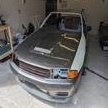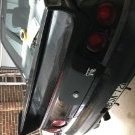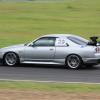R33 Gtst Handling Advice
Announcements
-
Similar Content
-
Latest Posts
-
Just wanted to pop in an update on my setup. The CD swap has been great, I love the mazworks housing for the overall simplicity. I ended up sealing my trans tunnel with a thin sheet of aluminum reused some of the holes on the trans tunnel, and laid some window sealing EPS foam around the edges. Works great, really quieted things down and sealed up the car. As for the power comment. Right now I am also running about 650whp. with the way the bell housing is attached to the face of the transmission I have zero doubts it would be fine, mainly because the input shaft and main shaft bearings are seated into the bell housing adapter. This means the load is NOT on the bolts to maintain the power, rather into he casing of the bell housing; Yes the bolts are doing some work there, but with both shafts locked in zero worries. End of the day, the Mazworks solution is the easiest and safest. no need to take your trans to a shop to get milled perfectly, it fits with minimal clearancing, and you can use all your existing clutch and flywheel. Driving wise the CD has been great compared to the big box, I'll probably swap my final drive at some point. The serial 9 shifter is gooooood, my only qualm is how tight it is, it takes a fair bit to get use to, 5th and 6th are a bit eh/hard to find at times, but maybe I need re-adjusting, and I think my clutch master is very tired and needs a rebuild.
-
By Dose Pipe Sutututu · Posted
If you are keen, have a look at my build thread. Car is for sale for the right money or straight swap for a F80 M3 LCI. -
By Murray_Calavera · Posted
Welcome mate. No point in over thinking it, buying any one of those cars you mentioned is not a smart or logical choice with the availability of many "better" (re price to performance) cars available to you. The heart wants what the heart wants, buy whatever it leads you too. -
Hey everyone! Im so grateful to be apart of this community and ill do my best to be apart of this. Firstly, i'm not disclosing my real name due to in real life circumstances surrounding my privacy and public image (sorry lol) Secondly, The only thing personal I am willing to share is that I'm from Sydney and a descendant of one of Sydneys largest mortgage firms. I got gifted my first ever car, a 2022 Porsche Cayenne and I love it to death. Ive been driving it for about 5 or 6 months now and honestly Im so grateful for my parents for gifting me this vehicle. However recently I've been working my ass off to afford my second car (which I need help deciding soooooo community help me out please?). Once decided, im planning to try modify it myself. Recent I've been thinking about getting a Skyline, particularly a 25GT or GT-V, yes I know overrated as hell, but I'm also considering a Chaser which I recently came to love. However my dream is to one day own a 180SX (So hard to find clean versions and im not really into importing). Lastly before I send this off, I want to apologize if I sound tacky or pretentious. I try not to and want to genuinely learn from everyone and anyone. (Im no expert in this area) Thanks for reading!
-
I've got three stashed away but it's starting to get silly with the prices
-






Recommended Posts
Create an account or sign in to comment
You need to be a member in order to leave a comment
Create an account
Sign up for a new account in our community. It's easy!
Register a new accountSign in
Already have an account? Sign in here.
Sign In Now